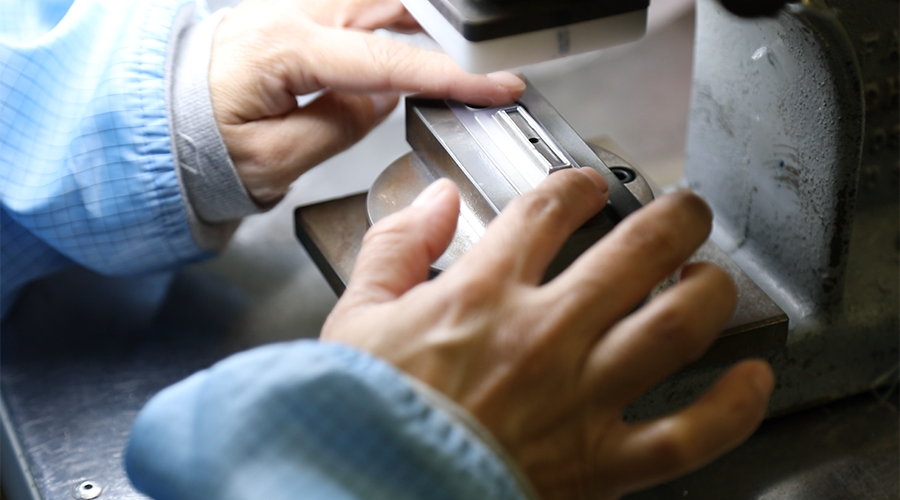Silicone Material and Processing Options:
How Design For Manufacturability (DFM) Aids in Balancing Product Design & Economics to Reduce Risk
Article Series, Part 3
April 27, 2023
Introduction
In the first part of this three-part series, we shared the versatility and unique qualities of silicone as the medical device material of choice. In part two of this series, we covered the different methods of manufacture for medical silicone components and devices. In this part three of our series on Silicone Processing Options for Life Sciences, we discuss how design for manufacturability (DFM) aids in selecting the right manufacturing process for your medical device application.
As a full-service solutions provider, Parker CSS Division’s Life Science Business Unit provides design for manufacturability services and offers highly responsive assembly and testing of medical instrumentation—from simple electromechanical devices to highly complex multi-technology integrated systems. The team’s extensive experience in medical devices allows for a quick and cost-effective product launch process, providing front-end design support, process development and validation to ensure your devices meet your specifications.
Recap: Medical Silicone Methods of Manufacture
We’ll begin here with a brief recap on medical silicone methods of manufacture. There are three manufacturing methods for medical devices: profile extrusion, compression molding and injection molding which utilize the two types of silicones considered optimal for life science applications—liquid silicone rubber (LSR) and high-consistency rubber (HCR) silicone.
LIM/LSR Molding. The liquid injection molding (LIM) process, using the most widely recognized liquid silicone rubber (LSR), begins by,
- Bringing an apportioned mixing and dispensing of LSR together which triggers the mixing reaction.
- The mixture is injected into a sealed injection mold cavity where it is heated to begin the curing process.
- Once hardened, the part is ejected from the molding machine.
- As we shared in part one of this series, LSR allows for very intricate designs, tight tolerances and complex automated manufacturing.
HCR Molding & Extrusion. While HCR silicone has a longer cure cycle than LSR, it offers a shorter lead time and upfront costs can be significantly less. The HCR manufacturing process includes:
- Mill softening and catalyzation to thoroughly blend the compound and any material curing agent into a homogenous product.
- Preform preparation and loading into molds or extrusion machines
- Vulcanization, curing of the silicone under pressure and heat. When necessary, post-curing in hot air vulcanizing ovens (HAVs)
- Finishing processes which may include visual inspection and cutting extruded shapes and extruded tubes into specified lengths.
For both molded LSR and HCR, trimming, punching, or de-flashing of molded parts is commonly required.

Design for Manufacturability
Let's now dig in and discuss how front-end support incorporating design for manufacturability (DFM), process development and validation services help medical device companies balance product design with economics to explore options that reduce risk and ensure your devices meet expectations.
Customers come to Parker in different phases of product development. When customers engage us early in the product development cycle, they leverage Parker’s expansive range of expertise. This is of tremendous benefit to customers as it allows greater freedom in exploring design for manufacturability options that balance product design with economics while reducing risk, thereby optimizing profitability.
Our comprehensive DFM review is backed by the entire CSS Division engineering staff, including product, chemical, quality, manufacturing, and process engineering teams. With our support, customers can balance product design and economics while minimizing potential defects through Finite Element Analysis (FEA) and mold flow analysis simulations.
John Thomas, Parker CSS Division tooling manager, notes that,
"having our own tool rooms allows us to respond quickly to issues on current parts as well as new program introductions; allowing us to continuously reduce downtime, improve quality, and increase yield."

Finite Element Analysis (FEA) mold flow analysis
Factors to Consider in Selecting the Right Manufacturing Process for Medical Devices
Common inputs affecting material selection and method of manufacture for medical devices include budget, volume/scale, time constraints, functional, aesthetic and regulatory requirements.
In arriving at a method of manufacture and type of silicone material, Parker and its customers discuss the following topics during development phases:
- What is the estimated annual usage?
- LSR ->High volume (millions of parts)
- HCR -> Medium to lower volume (thousands of parts)
- What is the desired lead time and how quickly does it need to launch?
- What is the capital spend budget for tooling, presses and other equipment?
- What material specifications need to be met?
- Mechanical requirements
- Cleanliness requirements
- Physical characteristics including chemical compatibility
- Aesthetics
- What are the functional requirements of the device
- Are there regulatory requirements governing manufacture, assembly, or secondary operations?
- What processing concerns do you have?
- Cycle time
- Shorter cycles times on LSR
- Longer cycles times in HCR due to curing time
- Automation
- LSR is capable of full automation
- HCR – compression/transfer molding is a manual process, not well suited for automation
Expert Guidance for Optimal Manufacturing Outcomes
Parker will guide you through choosing the right process, providing front-end design for manufacturability support, process development and validation to ensure medical device components and finished devices meet your specifications. Our broad range of capabilities include:
Tooling Capabilities
We work closely with reputable tooling houses to ensure rapid design and prototyping, as well as thorough testing of tools. Our three West Coast locations boast fully-equipped tool rooms, with expertise in compression transfer, injection, thermoplastic, and Liquid Silicone Rubber (LSR) molding. Our focus on tooling capabilities results in reduced downtime, fewer defects, and increased yield.
Validation Services
Our validation services help customers tailor their validation master plans to suit their specific needs. The validation process includes Installation Qualification (IQ), Operational Qualification (OQ), and Performance Qualification (PQ) procedures. These steps ensure that all equipment is calibrated and installed properly, tests the limits of the process window, and confirms that the production run meets customer requirements.
Tool Management System
Our tool management system maintains cycle counts and preventive maintenance schedules, ensuring tools remain in optimal condition. This system also keeps track of component inventory, notifying customers when it's time to restock. Furthermore, we conduct annual tool assessments to provide our customers with valuable insights into their tool's performance.
Project Management
Every project at Parker CSS is assigned to a dedicated engineer and project coordinator, ensuring close monitoring and follow-up throughout the development process. Our team conducts weekly or biweekly meetings with customers to update them on project progress and maintains internal meetings to keep all departments aligned with project timelines.
Build-to-Print Contract Manufacturing
Customers seeking traditional “build to print” contract manufacturing can rely on Parker’s expertise with medical molding and extrusion technologies for medical LSR and HCR materials. We can deliver high-quality components and finished medical devices that meet all required dimensions and specifications.
Conclusion
Leveraging Parker's Design for Manufacturability capabilities and extensive expertise, customers in the life science and medical device industries can optimize profitability while reducing risk. Stay tuned for our next blog post, where we will share a customer success story and discuss what sets Parker apart in the medical device manufacturing space.
More Information
Learn more about Parker medical materials and technology solutions for life science and medical devices.

This article contributed to by
John Thomas, tooling manager
Parker Engineered Materials Group, CSS Division

©2023 Parker Hannifin Corporation
